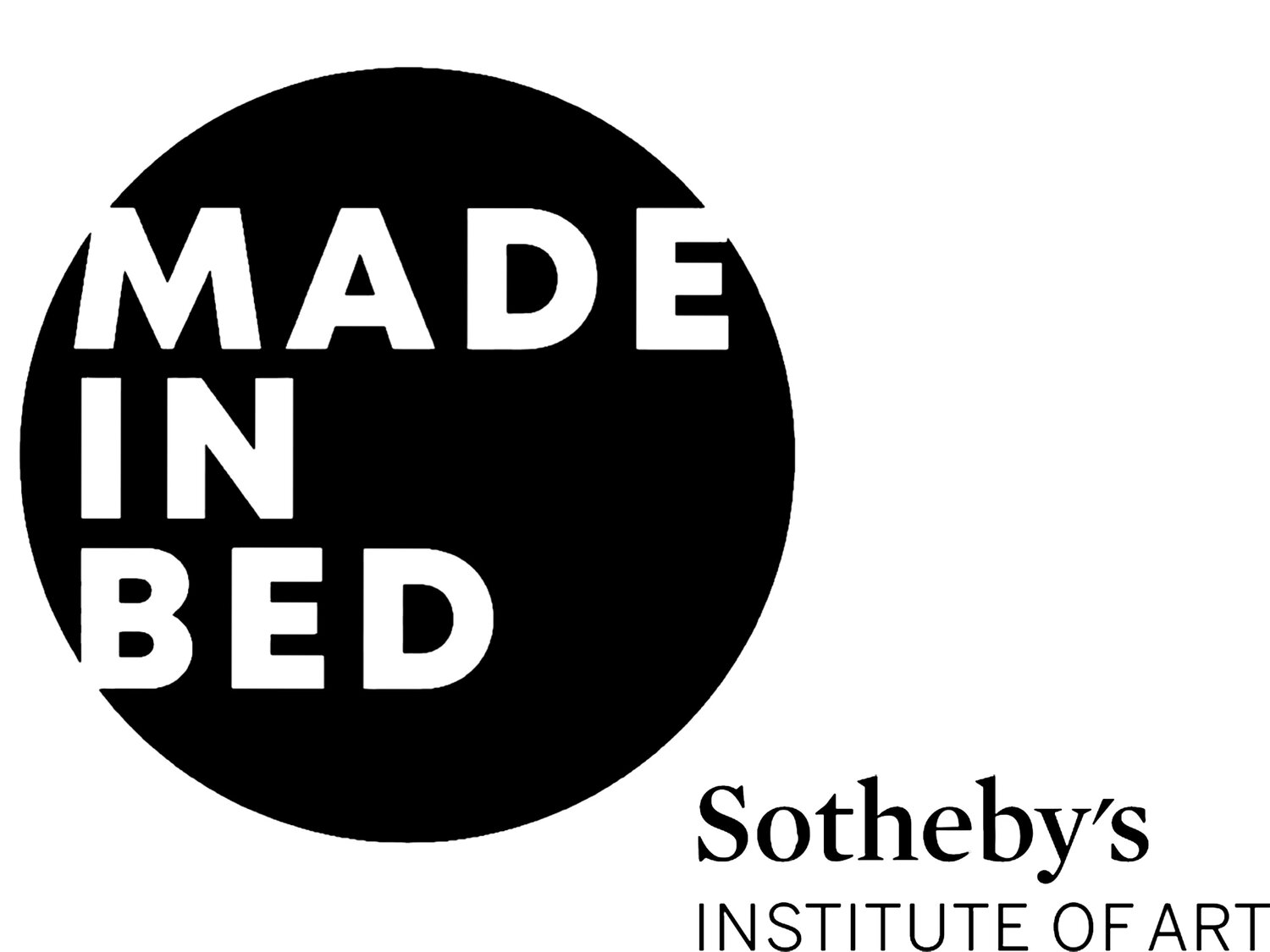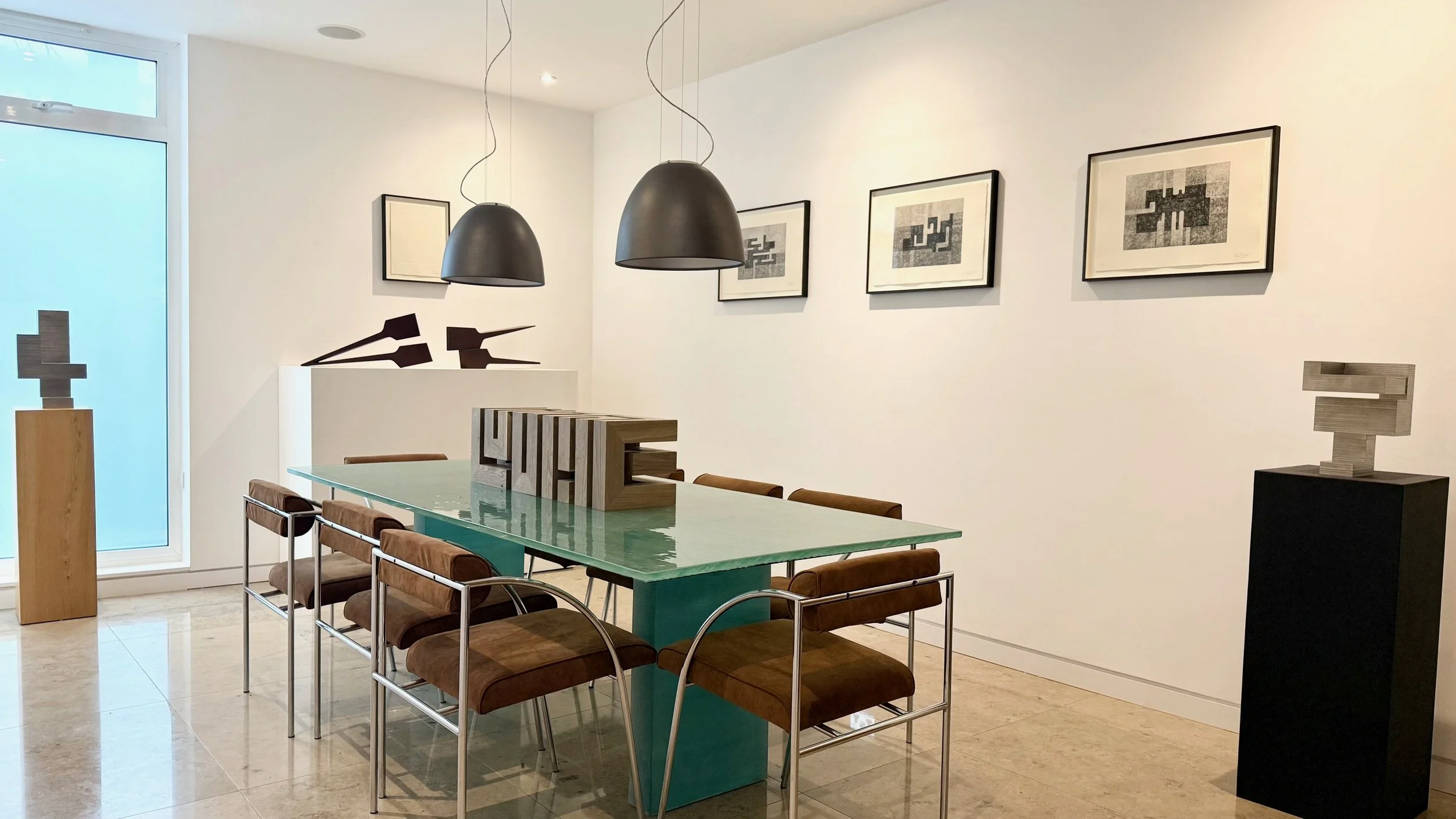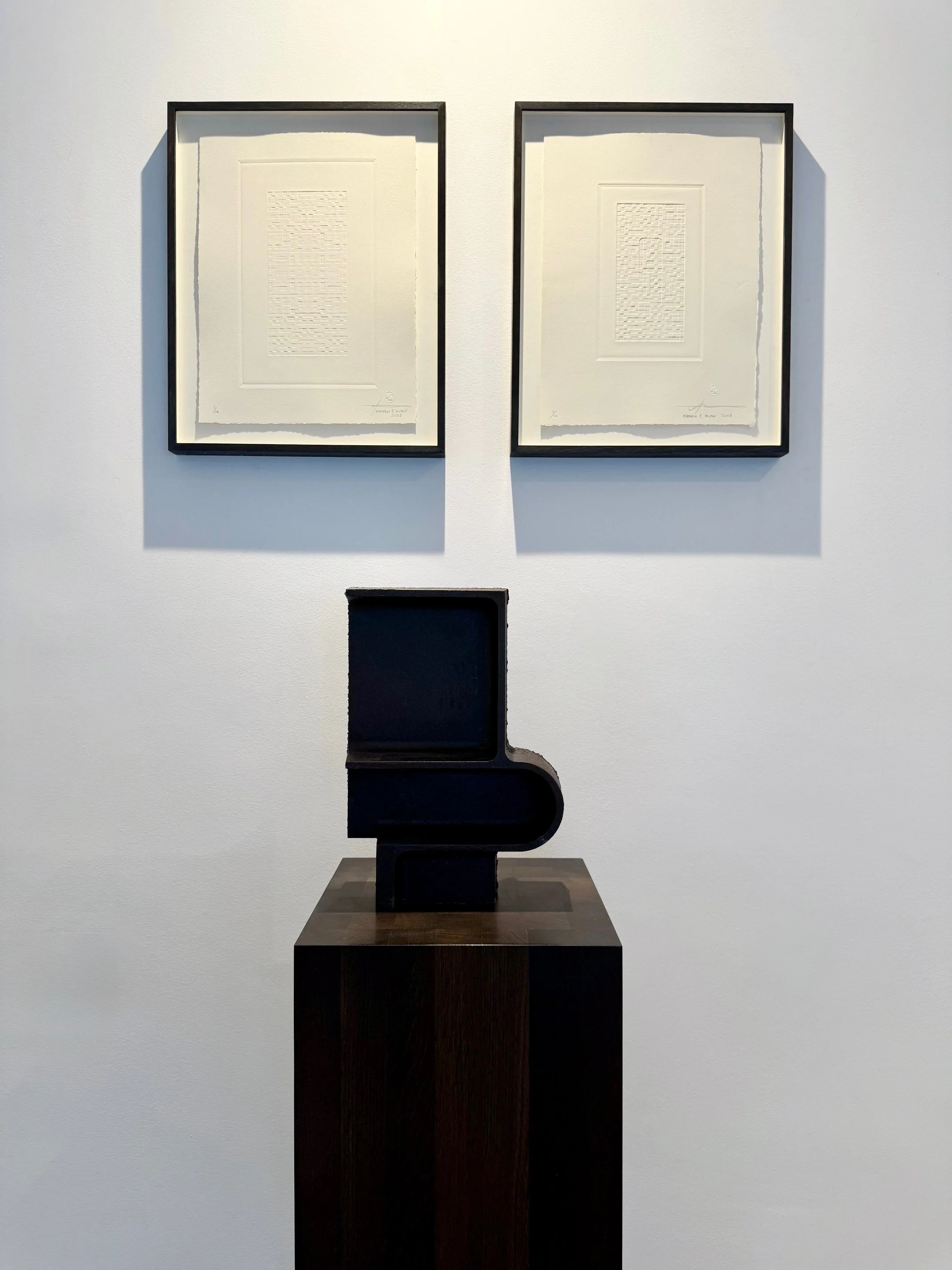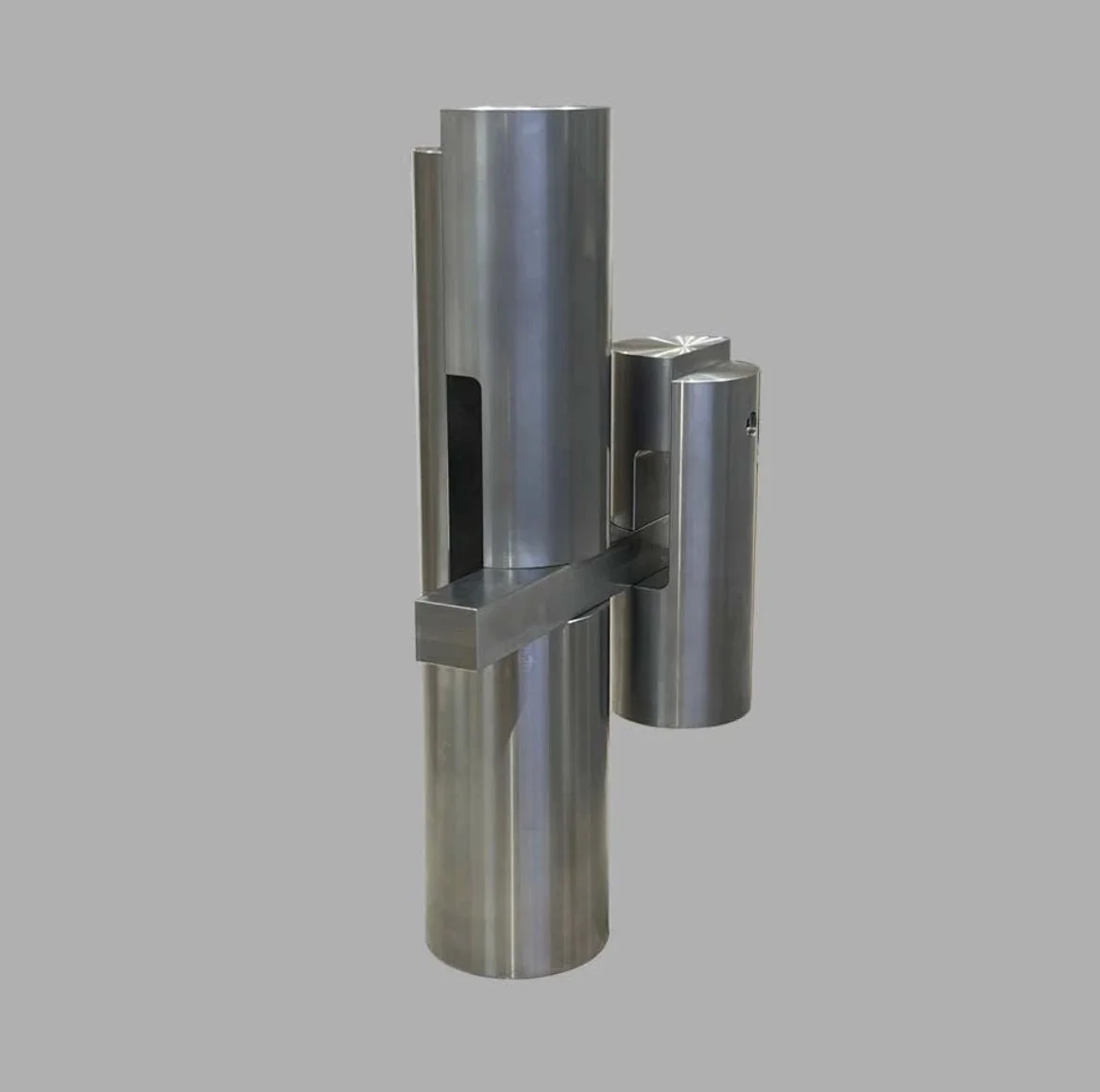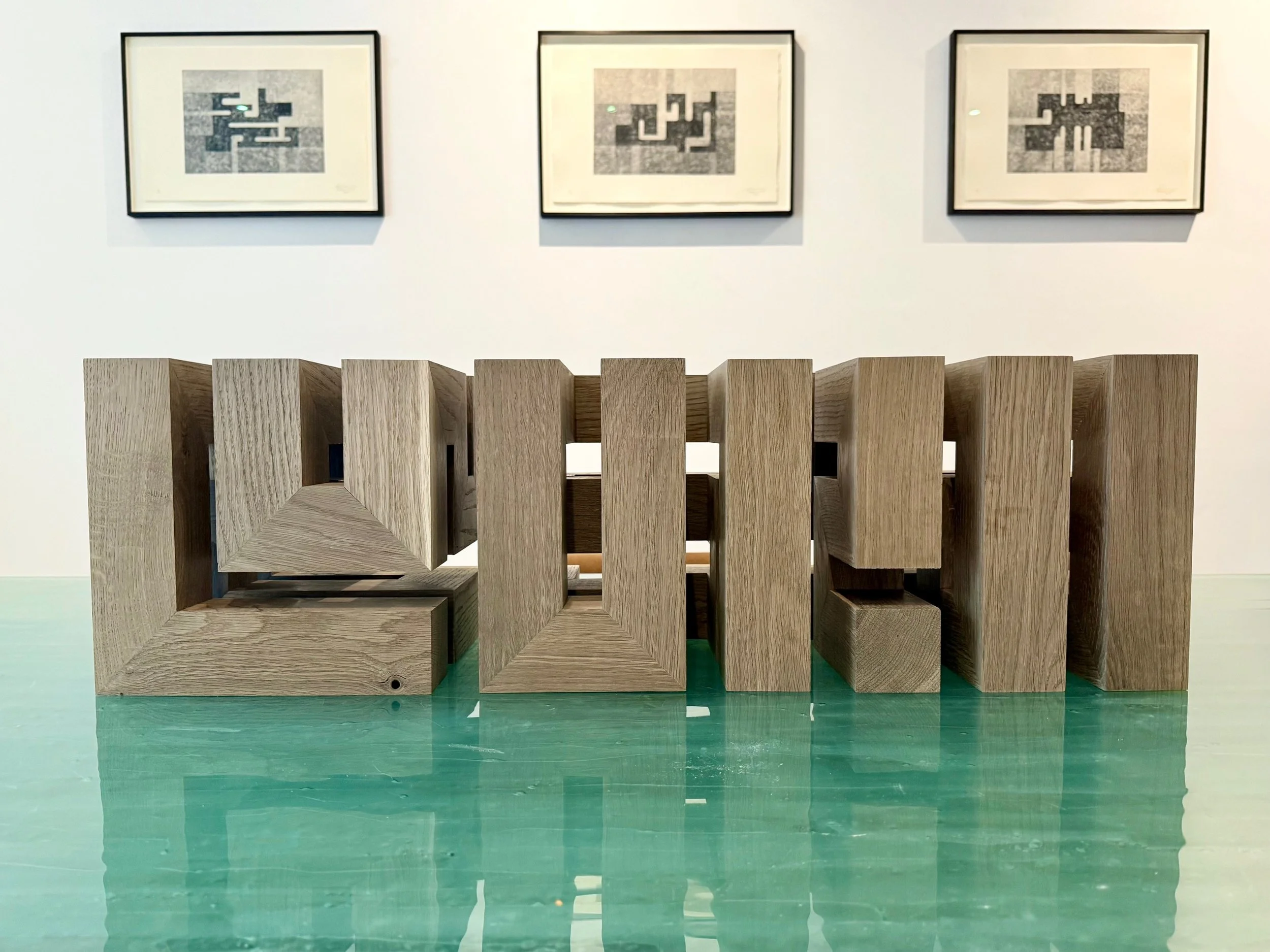Mairi Alice Dun in Conversation with The Wolf Collective & Artist Matthew Hilton
In a quiet house in Primrose Hill—just steps from Regent’s Park and the flow of visitors to Frieze Sculpture—The Wolf Collective is presenting Making Space, a new exhibition by Matthew Hilton that reveals a different facet of the celebrated British designer. Known internationally for furniture and lighting that balance elegance, utility, and a kind of restrained intelligence, Hilton has expanded his practice into sculpture in the last ten years, works on paper, and experimental material studies. The result is a body of work that loosens the precision of industrial design and enters a more intuitive, exploratory terrain: objects that shape and hold space, that investigate presence as much as form.
The exhibition is installed by The Wolf Collective, the curatorial platform founded by Iain Pattie and Lupe Sanchez, dedicated to supporting multidisciplinary artists whose work engages perception, memory, and material experience. True to their ethos, Making Space unfolds within a private home rather than a traditional gallery, allowing Hilton’s more than 35 works to be encountered as part of a lived environment instead of a neutral backdrop. It was in this setting—and amid the ongoing exhibition—that I sat down with Matthew Hilton and Iain Pattie to discuss process, transition, and what it means to ‘make space’ both creatively and domestically.
Matthew Hilton in his studio. Courtesy of the artist and Sitwell Dearden PR.
Mairi Alice Dun: The Wolf Collective is a far cry from the typical ‘white cube’ gallery, isn’t it? Was that a part of the design process?
Iain Pattie: We wanted it to be art in the home. Gallery spaces can be beautiful spaces, but sometimes they can be quite clinical. So, Matthew’s show starts right by the door as you enter. In terms of this show, Matthew's stuff is very much concentrated on the ground floor, and then our earlier artists we have on the other floors.
MAD: Matthew, you’ve moved over from the art world relatively recently, correct? What was that transition like?
It’s been about ten years since I began taking my frustration seriously and trying to do something about it. Furniture design has been a great career and an interesting working life, but I had real frustrations around restricted creativity. Of course, you still have to earn a living. I know it’s been ten years because I bought an iPad at the time specifically for this new work, separate from my office.
Because of my background, I’ve seen countless factories and ways things are made. I often noticed components of finished products and found those components had a focused efficiency that disappeared once they were joined to other parts and given a “skin” or style layer. I kept thinking about these things. I’d see piles of sawn timber stacked on pallets, and they’d look fantastic. So many of these materials are beautiful and overlooked. I didn’t know what to do with that for a long time. I made lots of drawings and models and kept asking myself: “Why would anyone be interested in this? Who cares? Is it just me?”
Then I saw Mike Nelson’s The Asset Strippers at Tate Britain about seven years ago. He’d bought second-hand machinery and installed it in the big hall, and the whole place smelled of engineering oil. It made me think that perhaps people are interested in this world. After that, I began working on it properly.
‘Making Space’ at The Wolf Collective. Photo courtesy the Wolf Collective and Sitwell Dearden PR.
MAD: Would you say the work in this show is a pivot from previous exhibitions, or a continuation?
MH: It’s a continuation with some additions. I started working with a printer and doing etchings, which I’ve always loved. I love the quality of the medium, so I’ve been learning how to do it. I’ve also found a way of making these nearly flat sculptures—reliefs, really. They’re embossed on paper but almost three-dimensional. That really appealed to me.
MAD: How did you come to embossing after mainly working with wood and metal?
MH: The printer I first went to—recommended by Lupe—worked on some earlier pieces. I started with the same printer Adrian Hemming uses.
IP: Yes, Adrian, our previous artist, works with oils, watercolours, and printing. His printer happens to be near where Matthew’s partner lives, and he has a big press. It all connected naturally.
MH: I didn’t know exactly what I wanted to do. I started with Adrian’s printer, but then he directed me to Nigel Oxley. Nigel’s retired now, but he used to work for a company that printed for Victor Pasmore, Elizabeth Frink, and Eduardo Paolozzi. I’d describe something I wanted to try, and he’d go off and find several prints that were relevant. Eventually I realised I had earlier work I could experiment with. I was nervous at first, but once we tried something, it worked.
MAD: You called them flat sculptures?
MH: I did. They’re reliefs, really, but I like that they aren’t just flat. I’ve never made these particular forms in 3D, but I’ve had drawings and models of them for quite a while. They’re like blocks stacked on each other. Some of these began as drawings for sculptures—originally more fluid—but these versions are more geometric. One of the fluid drawings became a carpet with Christopher Farr. Some reliefs come from sculptures; others become the starting point for sculpture. Some come before, some after.
Matthew Hilton, Grid Erosion Centre No.1 (2025), Grid Index Down (2025), and The Heat (2017-2023) installation view. Photo courtesy of The Wolf Collective and Sitwell Dearden PR.
MAD: Do you decide on the material first, or does the shape dictate the material? You’re using several different types.
MH: It can work both ways. I’m fascinated by how things are made, and that inevitably influences shape and form—and what you can express with it. The stacking of sheets, for example, is something I can do in my studio. Components are machined, then bolted and glued together. I enjoy that way of working, though it’s quite restricted in form—always horizontal and vertical.
The wall reliefs, on the other hand, are cast. It’s an entirely different process, and it allows for different forms.
Matthew Hilton, Float, 2017-2023. Stainless steel, 26 x 12.5 x 44cm. Photo courtesy: The Wolf Collective.
MAD: Tell me about this piece, Float (2023).
MH: There’s something gentle about it, even though it’s solid stainless steel. The whole piece is held together by two fixed elements—just two bolts. Anyone with an understanding of engineering would see that it’s actually quite complex to make, though that isn’t always visible. If it intrigues someone, there’s more to discover than what you see at first glance. Whales sleep vertically with their calves beside them, so the smaller element is meant to evoke that.
MAD: And these works here?
MH: This is Fuse on the left and Rest on the right, and Lean. They’re intended as industrial, tool-like forms that also carry a human quality—not quite “characteristics,” but something that evokes human relationships. They’re all couples, leaning or interacting. It’s about exploring that with very hard, industrial materials.
Matthew Hilton, Fuse and Lean installation view, 2017-2023. Corten steel. 61 x 12.5 x 29 cm. Photo courtesy of The Wolf Collective and Sitwell Dearden PR.
MAD: When you were organising Matthew’s work for the exhibition, did you imagine a specific journey for the visitor?
IP: Yes. In our first two shows, the artists filled the whole house. Matthew didn’t have quite that amount of work, so we concentrated everything on the lower floors. Lupe is the main curator, but I contribute ideas. We both have a good eye for composition, and we play around with things. When Matthew’s work arrived, we had a plan for the sculptures. Matthew moved them, then Lupe moved them again. The works on paper arrived late from the framer—around 10 p.m.—and we placed them where we thought they should go, and most are still in those positions. A few have moved, but overall it was an evolving process. We also wanted to preserve the sense of it being a home.
MAD: Matthew, how do you feel about your work being shown in a domestic setting?
MH: I kept asking Iain and Lupe to remove some furniture, but now I really like it. When I first came in and saw the space like this, I thought it looked great. I like that the sculpture and artwork sit within the environment. When it works, it works very well.
IP: At the opening we had about 140 people on the guest list and over 100 attended, so it was busy. In summer it’s manageable because we can open the doors and people can spill outside. We moved chairs to create clearer pathways so people could circulate. You have to think about these things—otherwise, like at a party, everyone ends up in the kitchen. We also told the other two artists to pull their collectors out of the living room so people could move through the space more easily.
Installation view: Matthew Hilton, Meander Cube, 2025. Fumed oak. Photo courtesy of The Wolf Collective and Sitwell Dearden PR.
As Making Space continues to unfold within the intimate setting of the Primrose Hill home—on view until 28 February 2026—it reflects The Wolf Collective’s commitment to presenting art as part of lived experience rather than as something cordoned off in a gallery. That same commitment extends into their next project, The Shape of Memory, a solo exhibition of works by Adrian Hemming at the Highgate Gallery in North London. Running from 14–27 November, the exhibition brings together Hemming’s philosophical explorations of myth, memory, and perception through oil, watercolour, and solar etching. With around thirty-five works, many never before displayed, The Shape of Memory is an opportunity to encounter the breadth of Hemming’s practice and the continued evolution of The Wolf Collective’s curatorial vision.
Special thanks to Matthew Hilton, The Wolf Collective, and Sitwell Dearden PR on behalf of MADE IN BED
Mairi Alice Dun
Editor-In-Chief, MADE IN BED

